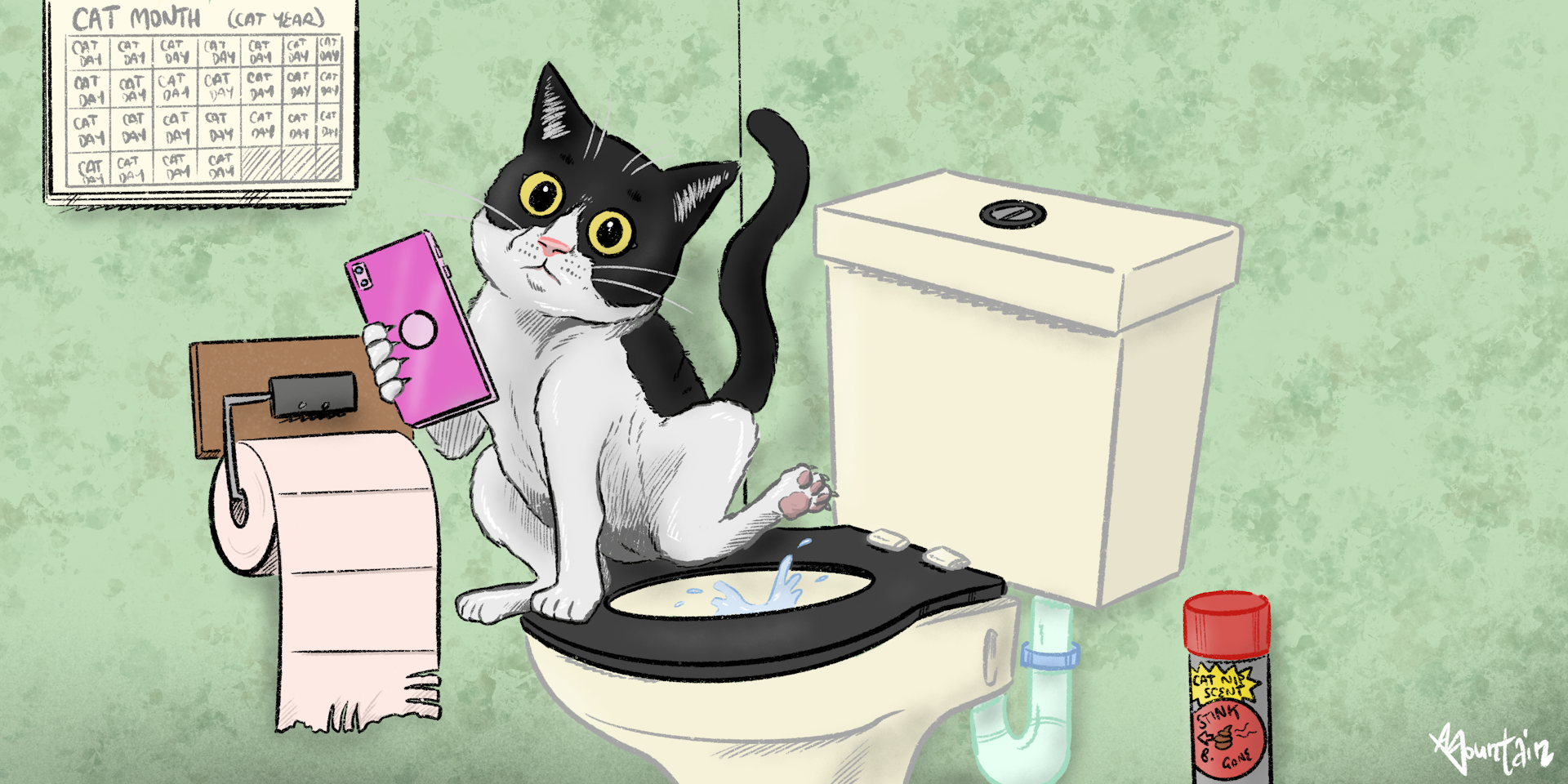Why Flushing Cat Poop Down Your Toilet Can Cause Problems - Recommendations for Proper Handling
Why Flushing Cat Poop Down Your Toilet Can Cause Problems - Recommendations for Proper Handling
Blog Article
Each person has got their own way of thinking with regards to Can You Flush Cat Poo or Litter Down the Toilet?.

Intro
As cat proprietors, it's important to be mindful of how we get rid of our feline buddies' waste. While it might seem hassle-free to flush pet cat poop down the commode, this method can have detrimental consequences for both the atmosphere and human wellness.
Environmental Impact
Purging feline poop presents dangerous pathogens and bloodsuckers into the water system, posturing a significant risk to water ecosystems. These pollutants can negatively impact marine life and compromise water top quality.
Health and wellness Risks
In addition to environmental issues, purging feline waste can likewise present wellness dangers to humans. Pet cat feces may include Toxoplasma gondii, a parasite that can cause toxoplasmosis-- a potentially severe health problem, particularly for expectant ladies and people with damaged immune systems.
Alternatives to Flushing
The good news is, there are more secure and a lot more accountable means to get rid of feline poop. Consider the following choices:
1. Scoop and Dispose in Trash
One of the most typical technique of throwing away cat poop is to scoop it right into a biodegradable bag and throw it in the trash. Make sure to make use of a dedicated litter inside story and get rid of the waste promptly.
2. Usage Biodegradable Litter
Opt for eco-friendly cat clutter made from products such as corn or wheat. These trashes are eco-friendly and can be safely taken care of in the garbage.
3. Hide in the Yard
If you have a lawn, take into consideration hiding feline waste in a designated area far from vegetable yards and water sources. Make sure to dig deep enough to stop contamination of groundwater.
4. Install a Pet Waste Disposal System
Buy a pet dog garbage disposal system particularly developed for pet cat waste. These systems utilize enzymes to break down the waste, reducing smell and environmental influence.
Final thought
Liable family pet ownership prolongs beyond offering food and shelter-- it likewise includes correct waste monitoring. By avoiding flushing pet cat poop down the toilet and going with different disposal techniques, we can minimize our ecological impact and safeguard human wellness.
Why Can’t I Flush Cat Poop?
It Spreads a Parasite
Cats are frequently infected with a parasite called toxoplasma gondii. The parasite causes an infection called toxoplasmosis. It is usually harmless to cats. The parasite only uses cat poop as a host for its eggs. Otherwise, the cat’s immune system usually keeps the infection at low enough levels to maintain its own health. But it does not stop the develop of eggs. These eggs are tiny and surprisingly tough. They may survive for a year before they begin to grow. But that’s the problem.
Our wastewater system is not designed to deal with toxoplasmosis eggs. Instead, most eggs will flush from your toilet into sewers and wastewater management plants. After the sewage is treated for many other harmful things in it, it is typically released into local rivers, lakes, or oceans. Here, the toxoplasmosis eggs can find new hosts, including starfish, crabs, otters, and many other wildlife. For many, this is a significant risk to their health. Toxoplasmosis can also end up infecting water sources that are important for agriculture, which means our deer, pigs, and sheep can get infected too.
Is There Risk to Humans?
There can be a risk to human life from flushing cat poop down the toilet. If you do so, the parasites from your cat’s poop can end up in shellfish, game animals, or livestock. If this meat is then served raw or undercooked, the people who eat it can get sick.
In fact, according to the CDC, 40 million people in the United States are infected with toxoplasma gondii. They get it from exposure to infected seafood, or from some kind of cat poop contamination, like drinking from a stream that is contaminated or touching anything that has come into contact with cat poop. That includes just cleaning a cat litter box.
Most people who get infected with these parasites will not develop any symptoms. However, for pregnant women or for those with compromised immune systems, the parasite can cause severe health problems.
How to Handle Cat Poop
The best way to handle cat poop is actually to clean the box more often. The eggs that the parasite sheds will not become active until one to five days after the cat poops. That means that if you clean daily, you’re much less likely to come into direct contact with infectious eggs.
That said, always dispose of cat poop in the garbage and not down the toilet. Wash your hands before and after you clean the litter box, and bring the bag of poop right outside to your garbage bins.
https://trenchlesssolutionsusa.com/why-cant-i-flush-cat-poop/

I ran across that blog posting about How to Dispose of Cat Poop and Litter Without Plastic Bags when scouting around the web. Do you know about somebody who is occupied with Don’t flush cat feces down the toilet? Do not hesitate to promote it. Many thanks for going through it.
Check Us Out Report this page